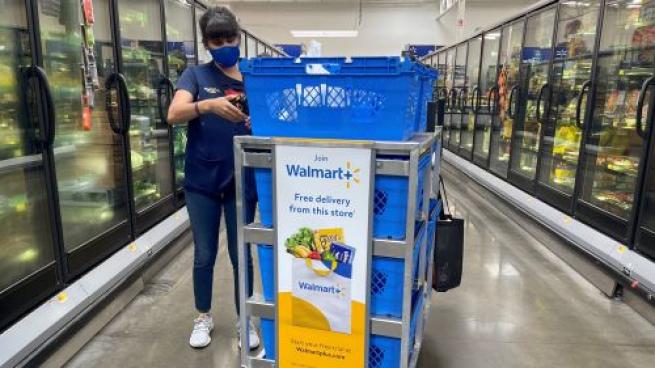What COVID-19 Taught Grocers About Employee Training

Like many, the grocery and retail industries had to turn on a dime to react to the pandemic. Some simply hoped to survive while others thrived. For those that remained open, the challenges were significant — staffing and fulfilling higher demand strained capacity. But those merchants also experienced record profit from that same demand.
Now, one year later, it’s beneficial to determine what these organizations learned and how they should move forward. As restaurant capacities increase and more Americans resume eating out, grocers will be challenged to continue to grow revenue and retain customers.
While few retailers would want to relive 2020, it’s an excellent time to consider some of the key lessons gleaned from that experience. What did grocers learn during that difficult period? What fundamental changes did they make that they should continue doing to improve experiences for both employees and customers?
Retailers learned that customers aren’t as loyal as assumed. The pandemic changed how consumers shopped. With so many retailers closed, consumers sometimes had to bypass their favorite stores and shop those that were open, nearby, offered online shopping capabilities, or that simply had the products consumers were looking for on the shelves. While some retailers lost customers, others got an influx.
As more stores open, customers have to decide whether to go back to their old favorite or stick with the new option. At the same time, retailers must determine how to win back customers that may have been lost to convenience while keeping the shoppers they have newly acquired.
While the pandemic and ensuing supply chain issues impacted consumer loyalty, everyday factors, such as customer service, quality of products, and checkout speed, will also affect loyalty.
Bottom line, retailers should not assume that even their best customers will be loyal. Instead, retailers should assume that every day is a new opportunity to win their customers’ business.
Training shows up in customer service and inventory care. The term “essential worker” became a familiar phrase as retailers and customers realized how critical grocery employees were in keeping communities operating. Some retailers offered employees better pay, improved work conditions and increased training. Retailers recognized that by elevating the employee experience, they could positively impact the customer experience.
As more grocers open, and as more restaurants follow suit, customers will have additional choices of where to get their meals from. Frontline grocery employees are a direct touchpoint to customers. Whether those interactions could come when bringing grocery bags to a customer’s car for BOPIS or answering a shopper’s question in the aisle or online, grocery employees are the face of the store. They need the skills and direction to ensure they provide a positive customer experience. Although providing appropriate training and tools is a financial investment, those tools help companies work more efficiently which also affects the bottom line.
Retailers can show appreciation and recognition of their frontline employees by making sure they have what they need to perform their jobs well. Unfortunately, this is sometimes a guessing game. Retailers have an abundance of customer information through CRMs, surveys, and other research but may have very little data on employees. Without that information, they can’t understand what their people know or don’t know, their issues, or where they need to be coached. Unless retailers use a solution that assesses L&D needs, they can’t get that done.
If retailers start to gather this data, they can use it to both understand employees and, in collaboration with business data, gain greater insights on employees’ impact on the grocery store.
Empathy matters. As important as it is for employees to show empathy and care for customers, retailers must do the same for employees. This means treating employees well and driving a positive culture with training and communication.
Employers are asking more of their teams. Training helps them understand how to take on more responsibilities and feel more confident in doing so. And yet, it’s often hard to find the time to train. Offering training that is captivating, relevant, easy to absorb, and that matches learning styles makes it more likely employees will complete and implement the lessons.
Not all learning comes from training. Leaders must also model the behaviors they want to see from employees, such as empathy, communication, transparency and fairness.
When employees feel their organization takes care of them and supports them, they are more engaged — which research shows is tied to customer satisfaction.
In 2020, grocery retailers acted with a sense of urgency. They prioritized, made swift decisions and implemented them. It wasn’t easy, and there were no doubt some missteps along the way. But the industry advanced more quickly in a year than had ever been dreamed of.
Now is not the time to stop progress. With the lessons learned from 2020, grocery retailers should look to the future. They can do this by empowering employees to have the tools, skills and other support needed to win customer loyalty every day.
The writer is co-founder and SVP of strategic initiatives for Axonify.
progressivegrocer.com

